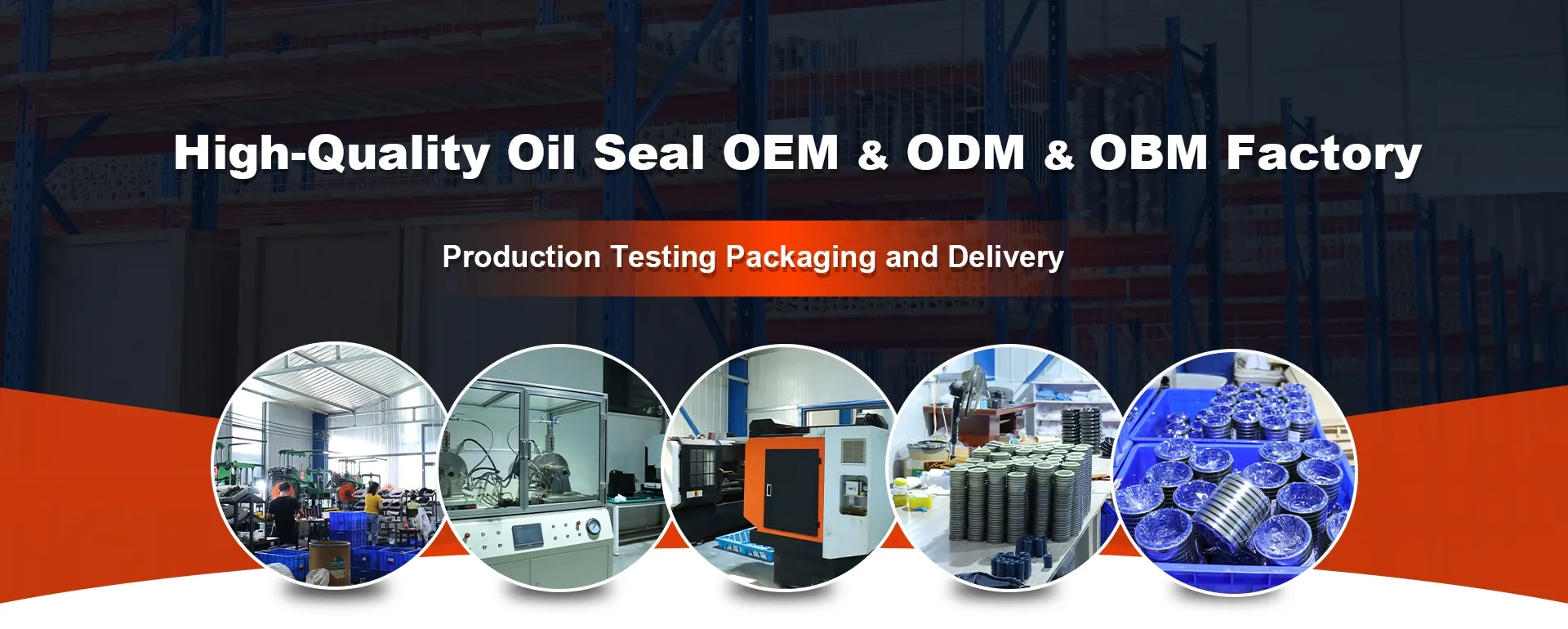अक्ट . 12, 2024 06:17 Back to list
hydraulic oil seal
Understanding Hydraulic Oil Seals Types, Functions, and Applications
Hydraulic systems are integral to a wide array of industrial and mechanical applications, providing the power necessary to perform heavy lifting, pressing, and other force-intensive operations. At the heart of these systems lie hydraulic oil seals, crucial components that ensure the proper functioning of hydraulic machinery. This article will explore the significance of hydraulic oil seals, their types, functions, and applications.
What Are Hydraulic Oil Seals?
Hydraulic oil seals are specialized components designed to prevent the leakage of hydraulic fluids, while also preventing the entry of contaminants that could harm the system. They are typically made from durable materials such as rubber, polyurethane, or PTFE (polytetrafluoroethylene) due to their elasticity, chemical resistance, and ability to withstand high pressures.
Functions of Hydraulic Oil Seals
The primary functions of hydraulic oil seals can be summarized as follows
1. Leak Prevention One of the most critical roles of hydraulic oil seals is to contain hydraulic fluids within the system. Any leak can lead to loss of pressure, which compromises the efficiency and operation of the hydraulic system.
2. Contamination Prevention Hydraulic fluids can be susceptible to contamination from dirt, dust, and other particulates. Seals act as barriers, ensuring that these contaminants do not enter the hydraulic chambers, which could lead to equipment failure.
3. Pressure Maintenance Hydraulic systems often operate under high pressure. Seals help maintain the necessary pressure within the hydraulic lines, contributing to the system's performance and reliability.
4. Friction Reduction Oil seals can also reduce friction between moving parts, which can improve efficiency, minimize wear and tear, and extend the life of the components involved.
5. Temperature Regulation In addition to mechanically protecting the system, many hydraulic seals help manage temperature by containing the oil and ensuring proper circulation. This is particularly important in high-stress environments, where overheating can lead to fluid degradation and seal failure.
Types of Hydraulic Oil Seals
There are several types of hydraulic oil seals, each designed to suit specific applications
hydraulic oil seal

1. Rotary Seals These seals are designed for rotating shafts and are commonly used in hydraulic motors and pumps. They typically feature a lip that bears against the rotating surface to prevent fluid leakage.
2. Linear Seals Commonly used in hydraulic cylinders, these seals slide along a stationary surface and serve to maintain the seal between moving and non-moving components.
3. V-Rings V-rings are a type of seal that can act as primary or secondary seals. They are versatile and adaptable, fitting various applications.
4. U-Cups Also known as U-seals, these are designed for applications involving linear motion. They can handle lower fluid pressure and are easy to install.
5. O-Rings These are circular seals that can be used in a variety of hydraulic applications. They provide a simple and efficient sealing solution and can be employed in both static and dynamic conditions.
Applications of Hydraulic Oil Seals
Hydraulic oil seals are utilized in a multitude of applications across various industries, including
- Automotive Hydraulic systems in vehicles often employ oil seals for power steering, brakes, and transmission systems. - Construction Machinery Heavy machinery such as excavators, cranes, and loaders use hydraulic systems for lifting and moving materials, relying heavily on oil seals to maintain pressure and efficiency.
- Manufacturing Industrial hydraulic systems used in pressing, molding, and fabrication processes depend on reliable sealing solutions to ensure consistency and quality.
- Aerospace The aerospace industry utilizes hydraulic oil seals in flight control systems, landing gear, and brake systems, where safety and reliability are paramount.
- Marine In marine applications, hydraulic oil seals are vital for steering systems and winches, protecting against water ingress and ensuring smooth operation.
Conclusion
Hydraulic oil seals are often an overlooked yet vital component of hydraulic systems. Their ability to prevent leaks, protect against contamination, and maintain pressure makes them indispensable in numerous industries. Understanding the various types and functions of hydraulic oil seals can help engineers and technicians ensure optimal performance and longevity of hydraulic systems, leading to improved efficiency and reduced operational costs. Whether in construction, automotive, or aerospace applications, investing in high-quality hydraulic oil seals is essential for the reliability and safety of hydraulic machinery.
-
TCN Oil Seal Metal Ring Reinforcement for Heavy Machinery
NewsJul.25,2025
-
Rotary Lip Seal Spring-Loaded Design for High-Speed Applications
NewsJul.25,2025
-
Hydraulic Cylinder Seals Polyurethane Material for High-Impact Jobs
NewsJul.25,2025
-
High Pressure Oil Seal Polyurethane Coating Wear Resistance
NewsJul.25,2025
-
Dust Proof Seal Double Lip Design for Construction Equipment
NewsJul.25,2025
-
Hub Seal Polyurethane Wear Resistance in Agricultural Vehicles
NewsJul.25,2025
-
The Trans-formative Journey of Wheel Hub Oil Seals
NewsJun.06,2025
Products categories
















